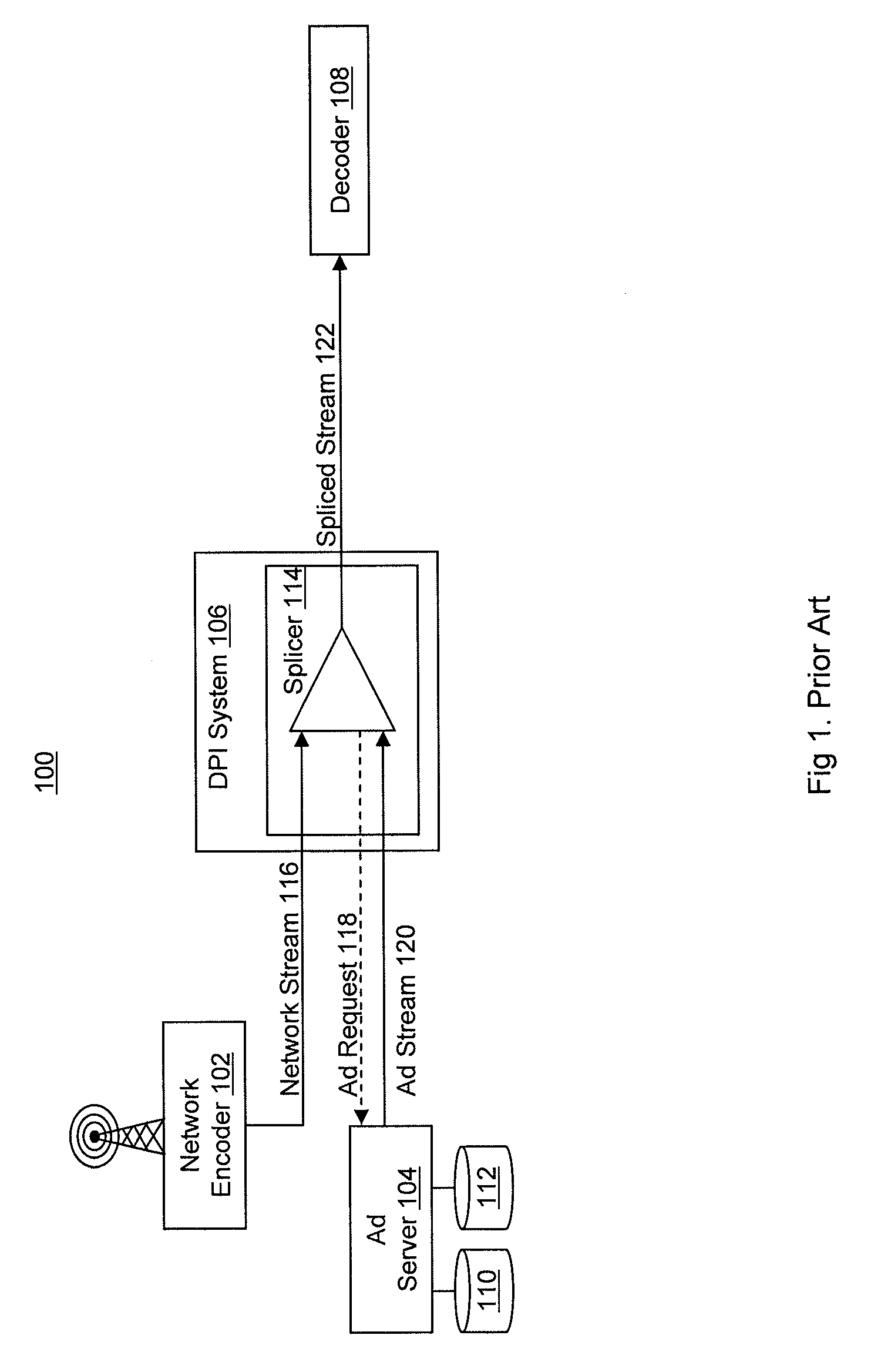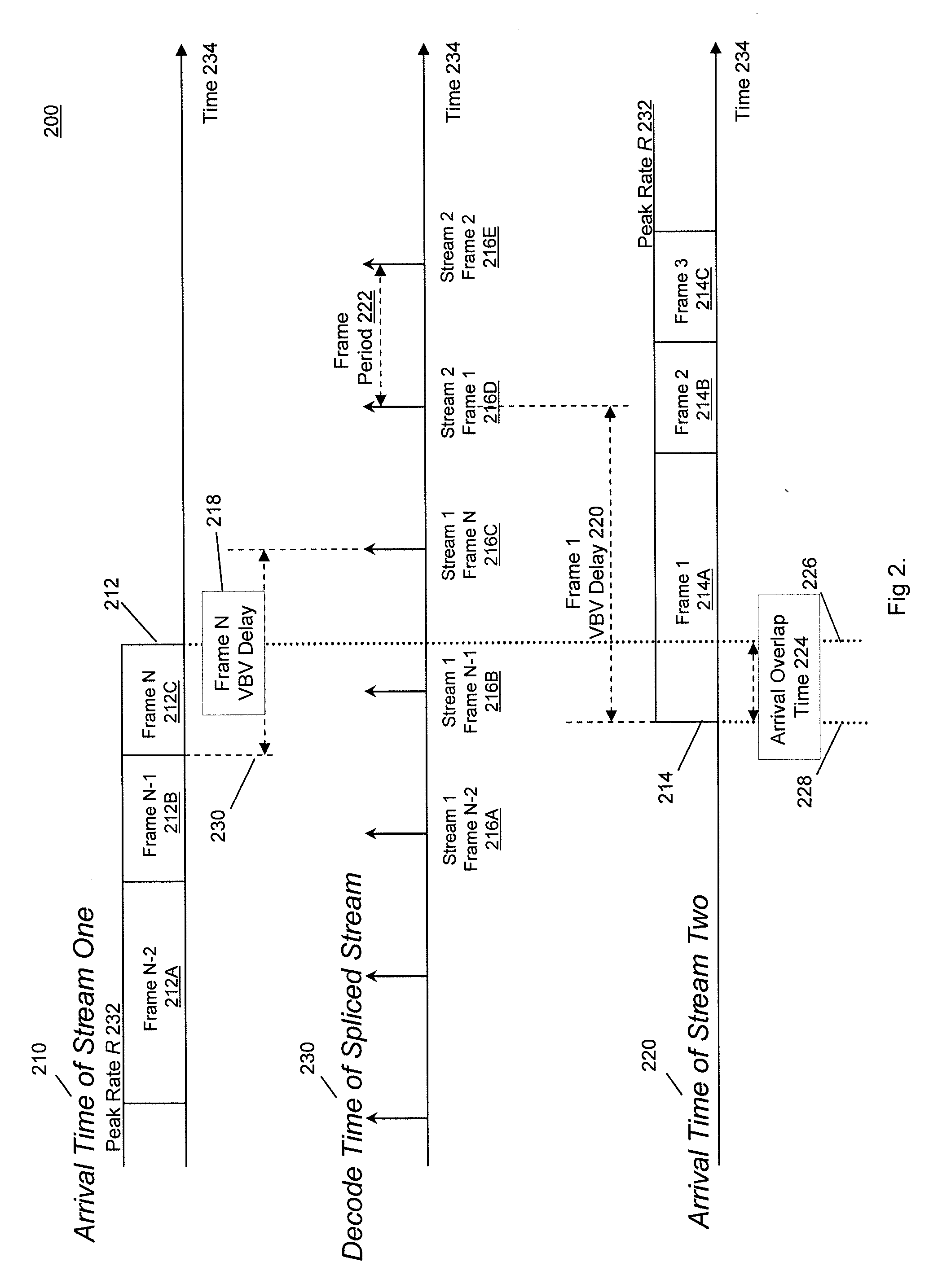Dynamic rate adjustment to splice compressed video streams
- Summary
- Abstract
- Description
- Claims
- Application Information
AI Technical Summary
Benefits of technology
Problems solved by technology
Method used
Image
Examples
Embodiment Construction
[0047]In general overview, a splicer receives a first compressed video stream of bits and buffers the first video stream of bits in a first buffer. The splicer receives a second compressed video stream of bits to splice into the first compressed video stream. The splicer buffers the second compressed video stream of bits in a second buffer. The splicer determines a departure time for a splice in-point of the second compressed video stream of bits. The splicer adjusts a rate of the first compressed video stream of bits, a rate of the second compressed video stream of bits, or both to achieve the departure time. Adjusting the rate of the first compressed video stream of bits, the rate of the second compressed video stream of bits, or both that ensures the last bit of the out-point frame from the first stream departs before the first bit of the in-point frame from the second stream.
[0048]FIG. 3 shows the splicing system 300 for seamlessly splicing multiple video streams. The splicing s...
PUM
 Login to View More
Login to View More Abstract
Description
Claims
Application Information
 Login to View More
Login to View More - R&D
- Intellectual Property
- Life Sciences
- Materials
- Tech Scout
- Unparalleled Data Quality
- Higher Quality Content
- 60% Fewer Hallucinations
Browse by: Latest US Patents, China's latest patents, Technical Efficacy Thesaurus, Application Domain, Technology Topic, Popular Technical Reports.
© 2025 PatSnap. All rights reserved.Legal|Privacy policy|Modern Slavery Act Transparency Statement|Sitemap|About US| Contact US: help@patsnap.com



